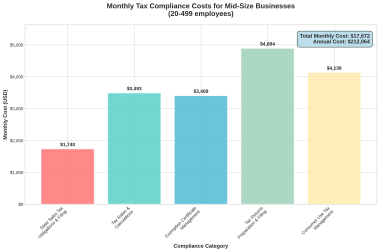Discover how retention and cohort analysis can help your SaaS business achieve product-market fit and unlock growth opportunities.
Are you struggling to figure out if your SaaS product truly meets your customers’ needs? Have you been trying to boost retention rates but can’t seem to crack the code? Finding the right product-market fit is like solving a complex puzzle.
But what if you could use retention and cohort analysis as your secret weapons to nail it?
In this article, we’ll break down what product-market fit really means for SaaS and how focusing on these key milestones can help you reach it faster. Let’s turn those challenges into opportunities for growth!
What is Product Market Fit for SaaS Businesses?
Product-Market Fit (PMF) is when your SaaS product meets the needs of your target market. It shows that your customers find value in your product and want to keep using it. This is crucial for sustainable growth.
PMF in SaaS means several things. First, your product solves a specific problem for your customers. They see its value and are willing to pay for it. High customer satisfaction and retention are signs of PMF. Low churn rates are also a good indicator.
Another key aspect is scalability. Once you achieve PMF, you can grow your user base without major changes to the product. This makes your business sustainable in the long term.
To achieve PMF, start by understanding your market. Identify your customers’ needs and pain points. Then, create a product that solves those issues. Test your product with real users and gather feedback. This helps you refine your product until it fits the market well.
Measuring PMF involves tracking key metrics. These include customer satisfaction, retention rates, and Net Promoter Score (NPS). Regularly check these metrics to ensure your product continues to meet market demands.
In short, PMF is about aligning your product with market needs. It leads to customer satisfaction and sets the stage for growth. By constantly measuring and adjusting, you can maintain this fit and drive your business forward.
Why Product Market Fit Matters For SaaS Startups?
Achieving product market fit (PMF) is essential for SaaS startups. It directly impacts growth, revenue, and sustainability. PMF means your product meets a real need in the market. This leads to higher customer satisfaction and better retention rates.
Without PMF, it’s hard to acquire customers. Churn rates increase, and scaling becomes difficult. PMF is the point where customers find value in your product. It sets the foundation for growth.
When a SaaS startup achieves PMF, it can focus on scaling. This involves expanding the customer base and increasing marketing efforts. PMF also affects revenue. Startups with PMF can charge fair prices, increasing revenue and profit margins.
In the long term, PMF is tied to sustainability. A product that fits the market will attract repeat customers. This reduces marketing costs and supports steady growth. Without PMF, a startup may struggle to retain customers or grow its market share.
How to Achieve Product Market Fit for a SaaS Product?
Achieving product-market fit (PMF) for your SaaS product is crucial for long-term success. It involves several strategic steps, each essential for aligning your product with the market needs. Here’s how to do it:
Identify Your Target Market
The first step is to clearly define your target market. Understand who your customers are, what problems they face, and what solutions they need. Conduct market research to identify ideal customer profiles. Segment your audience accordingly. This helps tailor your product to specific needs and preferences.
Understand the Market Needs
Once you’ve identified your target market, focus on understanding their needs. Gather insights through surveys, interviews, and competitive analysis. Determine what your audience is looking for in a SaaS product. This helps create a solution that addresses real pain points, increasing the likelihood of achieving PMF.
Create a Value Proposition
Your value proposition should clearly communicate the benefits of your product. Explain why your product is the best solution for your target market’s needs. A strong value proposition differentiates your product from competitors.
Develop a Minimum Viable Product (MVP)
Create a Minimum Viable Product (MVP). This is a simplified version of your product with only the essential features. An MVP allows you to test your product in the market. Gather user feedback and make necessary improvements before a full-scale launch.
Gather and Analyze Feedback
Feedback is critical for refining your product. Use customer feedback to understand what works and what doesn’t. Analyzing feedback helps make informed decisions about product improvements that resonate with market.
Iterate and Improve
Product-market fit is not a one-time achievement. It requires continuous iteration and improvement. Based on feedback, make necessary adjustments to your product. Regularly update and enhance your product to meet the evolving needs of your customers.
Measure Product-Market Fit
Measure product-market fit to understand how well your product is performing. Key metrics to consider are customer retention rates, net promoter scores (NPS), and customer satisfaction surveys. These metrics provide insights into how well your product meets market demands.
Optimize Your Marketing Message
Once your product aligns with market needs, optimize your marketing message. Ensure your marketing materials clearly communicate the value proposition of your product. A compelling marketing message can attract more customers and drive sales.
Scale Wisely
Scale your SaaS product strategically. As you grow, focus on maintaining a high-quality customer experience. Fungies can help by simplifying the management of payments, subscriptions, and billing processes. Efficient management is crucial for scaling without compromising customer satisfaction.
Maintain Market Alignment
Finally, maintain market alignment to sustain product-market fit. Stay attuned to changes in market trends and customer needs. Continuously gather feedback and adapt your product to ensure it remains relevant and valuable to your target market.
By following these steps, you can achieve and maintain product-market fit. This sets your SaaS product up for long-term success.
How to Measure SaaS Product Market Fit?
Measuring SaaS product market fit (PMF) helps you determine if your product meets the needs of your target market. Here’s a detailed guide on how to measure it effectively.
Customer Surveys
Sean Ellis Survey Method
The Sean Ellis survey method helps assess product market fit. It asks customers one key question: “How would you feel if you could no longer use this product?” Customers can answer “Very disappointed,” “Somewhat disappointed,” or “Not disappointed.” If many customers say “Very disappointed,” it means your product is crucial for them. This indicates strong product market fit.
Types of Customer Satisfaction Surveys
- Net Promoter Score (NPS): NPS measures how likely customers are to recommend your product. A high NPS suggests that customers are satisfied and willing to promote your product to others.
- Customer Effort Score (CES): CES measures how easy it is for customers to use your product or solve issues. Lower effort scores indicate that your product is user-friendly, which can improve product market fit.
Retention Metrics
Churn Rate
Churn rate is the percentage of customers who stop using your product during a specific period. A high churn rate can signal problems with your product. Lower churn rates mean your product is retaining users well, which is essential for strong product market fit.
Customer Lifetime Value (CLV)
Customer Lifetime Value (CLV) calculates the total revenue you can expect from a customer over their lifetime. A higher CLV shows that customers find long-term value in your product. This indicates good product market fit because customers are willing to stay and pay for your product.
Usage and Engagement Metrics
Tracking Active Users
Track daily active users (DAU), weekly active users (WAU), and monthly active users (MAU). These metrics show how often customers use your product. High active user counts suggest that your product is engaging and valuable.
Measuring Feature Adoption Rates
Measure how quickly and how often users adopt new features. High adoption rates indicate that new features are meeting customer needs. This helps you understand if your product is evolving in line with market demands.
Cohort Analysis
What is Cohort Analysis?
Cohort analysis groups users based on shared characteristics during a specific time period. For example, you might create a cohort of users who signed up in January. This helps you see patterns and trends in user behavior over time.
Analyzing Cohort Data
Examine how each cohort behaves as they continue to use your product. Look for trends like increased engagement or reduced churn. Analyzing this data helps uncover insights about how well your product fits different segments of your market.
Organic Growth Indicators
Impact of Word-of-Mouth and Referrals
Word-of-mouth and referrals can significantly drive growth. When existing customers recommend your product to others, it shows they find it valuable. This type of growth is a positive sign of product market fit.
Viral Coefficient
The viral coefficient measures how many new customers each existing customer brings in. A viral coefficient greater than 1 indicates that your product is growing rapidly through referrals. This suggests strong product market fit and effective word-of-mouth marketing.
Revenue Metrics
Importance of MRR
Monthly Recurring Revenue (MRR) measures the predictable revenue earned each month. Tracking MRR helps assess your product’s financial health and market fit. Consistent MRR growth shows that your product is meeting market needs.
Gross and Net Revenue Retention
Gross revenue retention measures the percentage of revenue retained from existing customers. Net revenue retention includes upsells and expansions. High retention rates in both measures indicate that your product continues to deliver value to customers.
Customer Feedback and Iteration
Collecting Customer Feedback
Gather feedback through surveys, interviews, and direct communication. Understanding customer opinions helps you improve your product. Regular feedback helps ensure that your product remains aligned with customer needs.
Importance of Iterative Development
Iterative development means regularly updating and improving your product based on feedback. This ongoing process is crucial for maintaining and enhancing product market fit. Adapting to customer needs helps ensure your product stays relevant and valuable.
By using these methods, you can effectively measure and achieve product market fit for your SaaS product. Each approach provides valuable insights into how well your product aligns with market needs.
How to Enhance Retention: 7 Key Strategies
Enhancing customer retention is crucial for the long-term success of your SaaS business. Here are seven key strategies to help you improve retention rates effectively.
Understand Customer Needs
To keep your customers happy, you must understand their needs. Regularly gather feedback through surveys and interviews. Analyze this data to identify what your customers want and what problems they face. By knowing their needs, you can tailor your product to meet them better.
Improve Onboarding Experience
A smooth onboarding experience is vital for retaining customers. Make sure new users can easily understand and use your product from the start. Provide clear instructions and helpful resources. A great onboarding experience sets the stage for long-term satisfaction and loyalty.
Enhance Product Value
Continuously work on improving your product. Add features that address customer pain points and enhance existing ones. Regular updates and improvements show that you are committed to providing value. The more value your product delivers, the more likely customers are to stay.
Foster Customer Engagement
Engage with your customers regularly. Use email newsletters, in-app messages, and social media to keep them informed and involved. Offering webinars, tutorials, and community forums can also boost engagement. Active and informed customers are more likely to remain loyal.
Proactive Customer Support
Provide excellent customer support to solve problems quickly. Offer multiple support channels, such as chat, email, and phone. Address issues before they become major problems. Proactive support helps build trust and keeps customers satisfied.
Monitor Key Retention Metrics
Track important metrics to understand how well you are retaining customers. Key metrics include churn rate, customer lifetime value (CLV), and renewal rates. Monitoring these metrics helps you spot trends and make data-driven decisions.
Use Feedback for Continuous Improvement
Regularly collect and analyze customer feedback. Use this feedback to make informed updates and changes to your product. Continuous improvement based on feedback keeps your product relevant and valuable.
Fungies can help with this process. It streamlines billing and improves customer experience. By managing subscriptions, payments, and billing efficiently, Fungies reduces friction. This leads to higher satisfaction and retention rates.
Apply these strategies to enhance customer retention. Each strategy helps keep your customers satisfied and engaged with your SaaS product.
How to Use Cohort Analysis Insights to Improve PMF?
Cohort analysis provides valuable insights that can help improve your SaaS product market fit (PMF). By analyzing data from different user groups, you can make targeted improvements. Here’s how to use these insights effectively.
Address Identified Issues
Cohort analysis helps you identify common problems within specific user groups. For example, you might find that users who joined in a particular month are experiencing issues with a feature. Addressing these issues directly can improve user satisfaction and retention. Fixing problems highlighted by cohort data can enhance your overall product market fit.
Enhance Product Features
Use cohort analysis to see how different groups interact with your product features. For instance, if a cohort shows low engagement with a new feature, it might need improvement. By understanding which features are popular , you can make informed decisions about updates. Improving features based on cohort insights ensures your product meets the needs of your diverse user base.
Optimise Marketing Strategies
Cohort analysis shows how different groups react to your marketing efforts. If some cohorts respond better to certain campaigns, you can adjust your strategies. Tailoring your marketing based on cohort data helps attract users who find the most value in your product. This optimization improves your product-market fit.
Using cohort analysis insights helps address issues, enhance features, and refine marketing strategies. This approach aligns your product more closely with market needs. It supports achieving and maintaining a strong product-market fit, which is key for your SaaS business’s long-term success.
FAQs
- What are the SaaS metrics for product-market fit?
Key metrics include customer retention rate, churn rate, Net Promoter Score (NPS), Customer Lifetime Value (CLV), activation rate, Monthly Recurring Revenue (MRR), and feature usage rates. These indicators help assess if your product meets market needs.
- How can a SaaS company determine if it has achieved Product-Market Fit?
Look for positive customer feedback, a growing user base, low churn rate, and high customer satisfaction. These signs suggest your product is well-aligned with market needs.
- What are the key metrics to track for Product-Market Fit in SaaS?
Track customer retention rate, NPS, churn rate, CLV, activation rate, and MRR. Monitoring these metrics helps you gauge how well your product fits the market.
- What are some common challenges in achieving Product-Market Fit for SaaS startups?
Challenges include finding the right target market. Understanding what customers need is also tough. It’s important to stand out from competitors. Adapting to market changes is key. Scaling too quickly can be risky. Tackling these issues is essential for achieving and keeping product-market fit.






